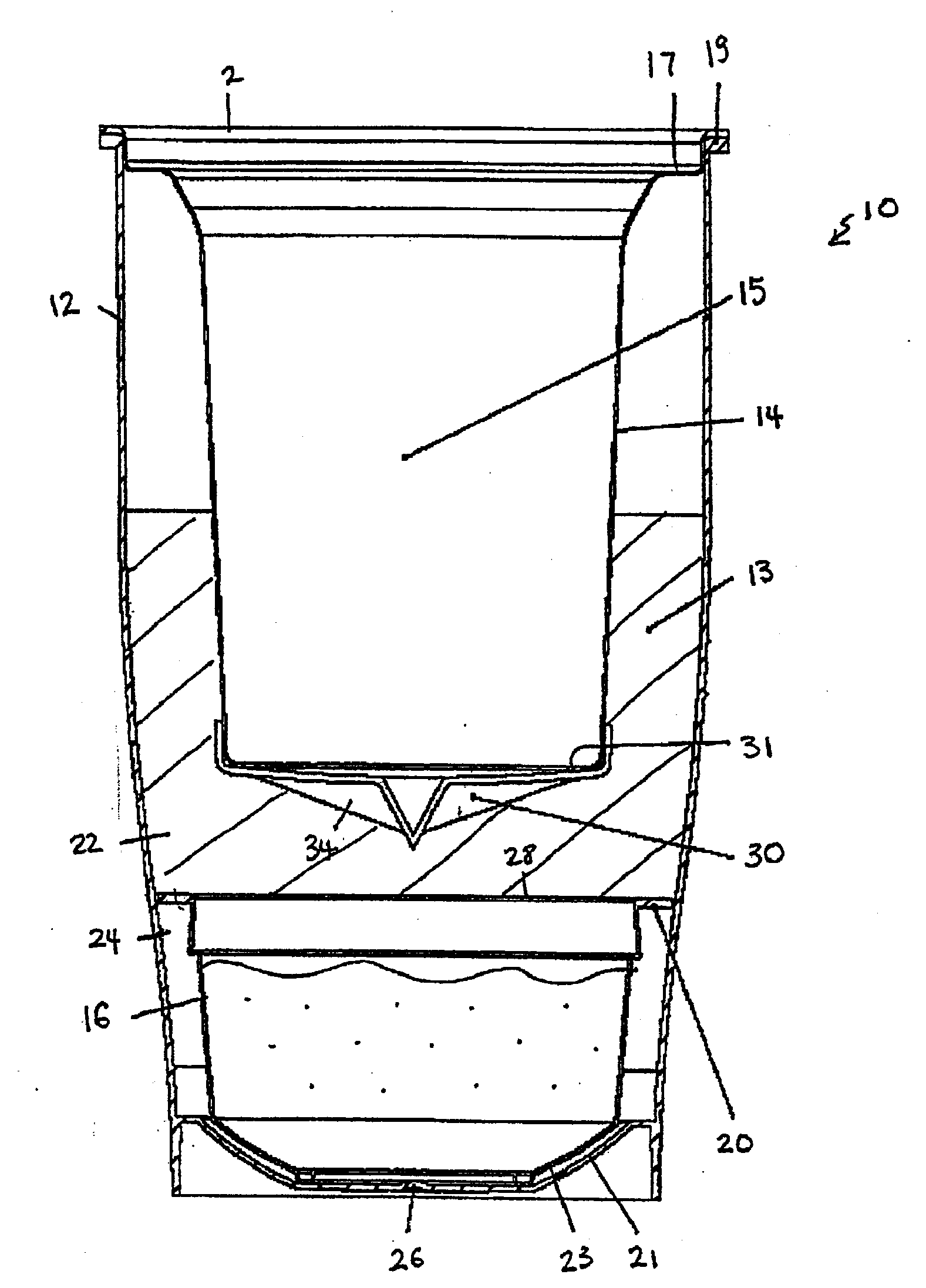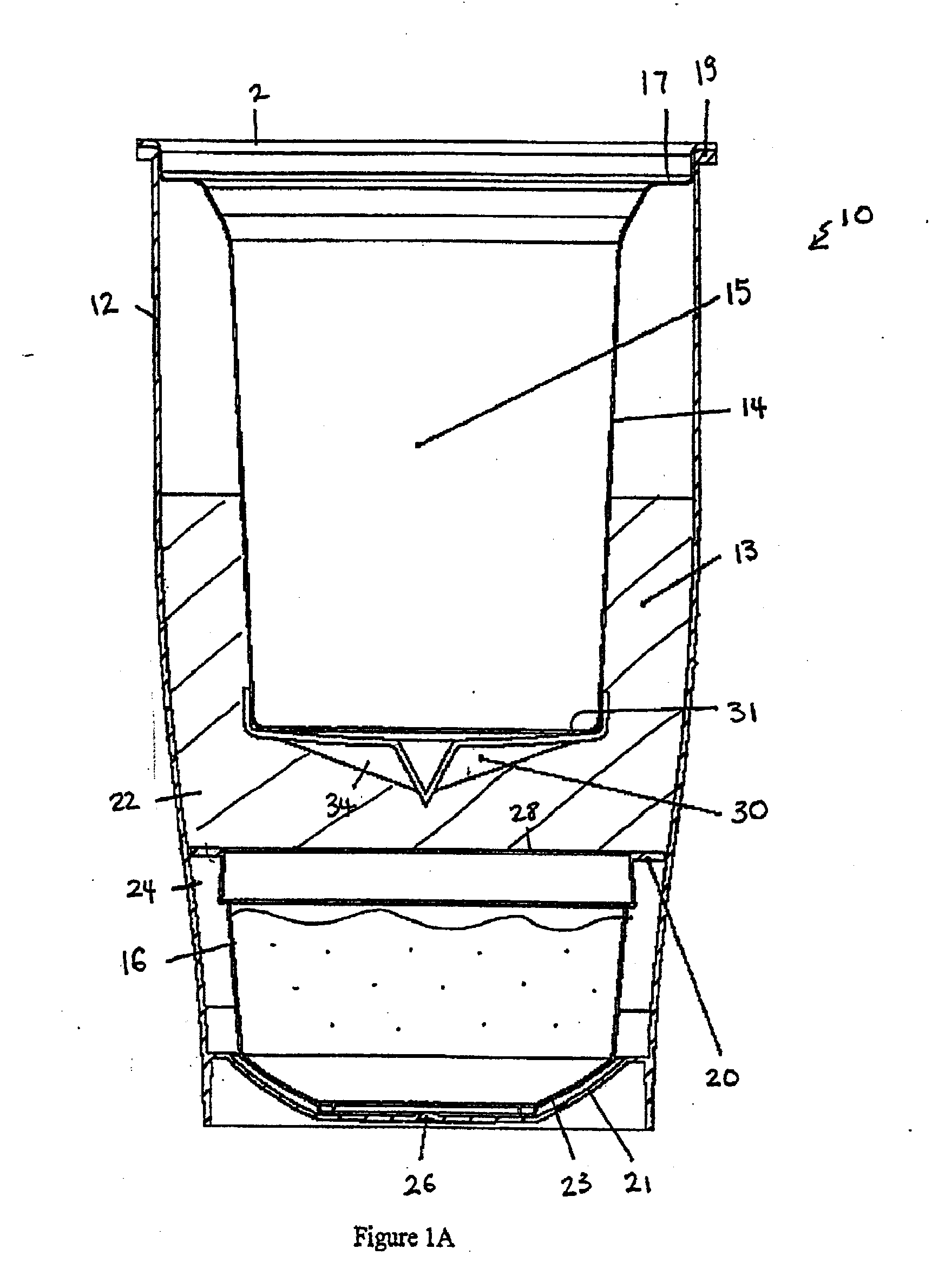Self-heating apparatuses using solid chemical reactants
- Summary
- Abstract
- Description
- Claims
- Application Information
AI Technical Summary
Benefits of technology
Problems solved by technology
Method used
Image
Examples
examples 1-4
[0138]700 grams of calcium chloride dihydrate, 200 grams of magnesium chloride anhydrous and 200 grams of calcium oxide is mixed together in a beaker with a spatula until the powders are thoroughly mixed. In a separate container a 5% solution of lactic acid in distilled water is mixed. Sixty-three grams of the 5% lactic acid was placed in a bottom enclosed compartment of a heat cup (i.e. self-heating apparatus) and 35 grams of the powder mix was loaded into an upper enclosed compartment. The drinking cup (i.e. heating chamber) was filled with water. The cup was activated by pushing a button on the bottom thereby breaking the breakable partition between the bottom and upper enclosed compartments, then shaking for 30 seconds, and then letting sit. After a total of two minutes the drinking liquid was 105° F. The exact same experiment was repeated with the exception of using 45 grams of the powder and the drinking liquid in the heating compartment reached 116.2° F. Again, the experiment...
example 5-7
[0139]In a small beaker 35 grams of calcium chloride was mixed with 10 grams of magnesium chloride and 10 grams of calcium oxide in a first enclosed compartment. The liquid cup contained 65 grams of 10% lactic acid solution in a second enclosed compartment when the cup was activated by breaking a breakable partition, whereupon the temperature reached 144.5° F. Two more drinking cups (i.e. self-heating apparatuses) with the exact same contents were constructed and one cup reached 141.2 F and the other was 146.3° F. The heating chambers of the drinking cups in these three examples were filled with water as the medium to be heated.
examples 8-10
[0140]In the next set of examples the bottom enclosed compartments contained a solution that was 15% lactic acid and 0.5% sodium lauryl sulfate in distilled water. The bottom enclosed compartments were filled with 65 grams of this solution. In the first example the heating chamber of the drinking cup was filled with tea, and an upper enclosed compartment contained a dry powder composed of 35 grams of calcium chloride, 10 grams of calcium oxide and 10 grams of magnesium chloride. When activated by breaking a breakable partition between the upper and bottom enclosed compartments, the temperature was 137.8° F. Another cup was made the exact same way but contained water in the heating chamber of the drinking cup and the temperature reached 143.4° F. A third cup was prepared with the same lactic acid-sodium lauryl sulfate solution in the bottom enclosed compartment, and the powder contained 38.5 grams of calcium chloride, 11 grams of magnesium chloride and 11 grams of calcium oxide. The ...
PUM
 Login to View More
Login to View More Abstract
Description
Claims
Application Information
 Login to View More
Login to View More - R&D
- Intellectual Property
- Life Sciences
- Materials
- Tech Scout
- Unparalleled Data Quality
- Higher Quality Content
- 60% Fewer Hallucinations
Browse by: Latest US Patents, China's latest patents, Technical Efficacy Thesaurus, Application Domain, Technology Topic, Popular Technical Reports.
© 2025 PatSnap. All rights reserved.Legal|Privacy policy|Modern Slavery Act Transparency Statement|Sitemap|About US| Contact US: help@patsnap.com



